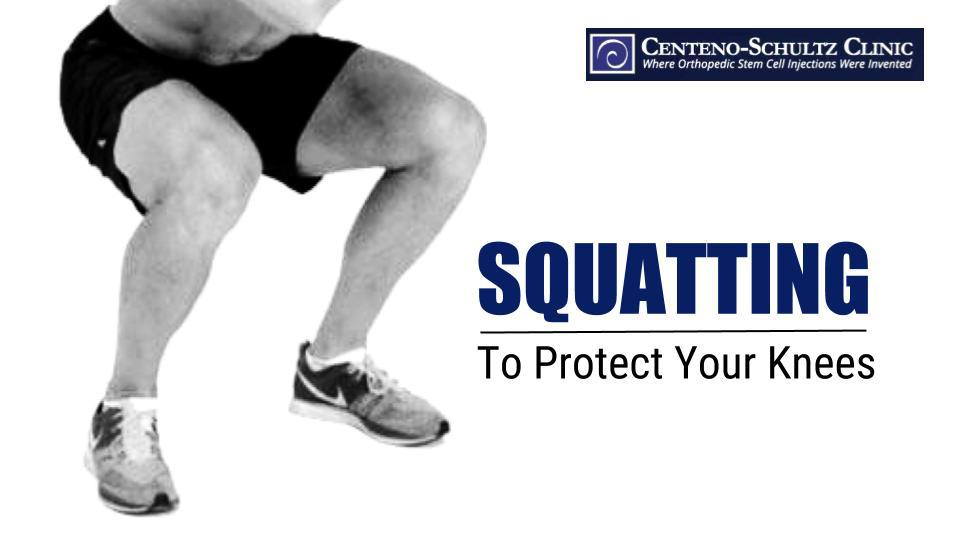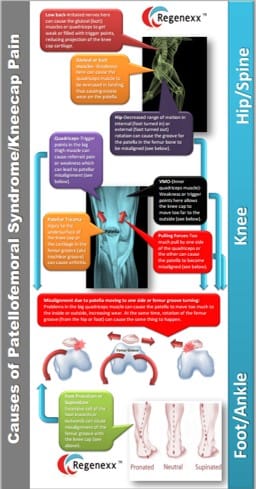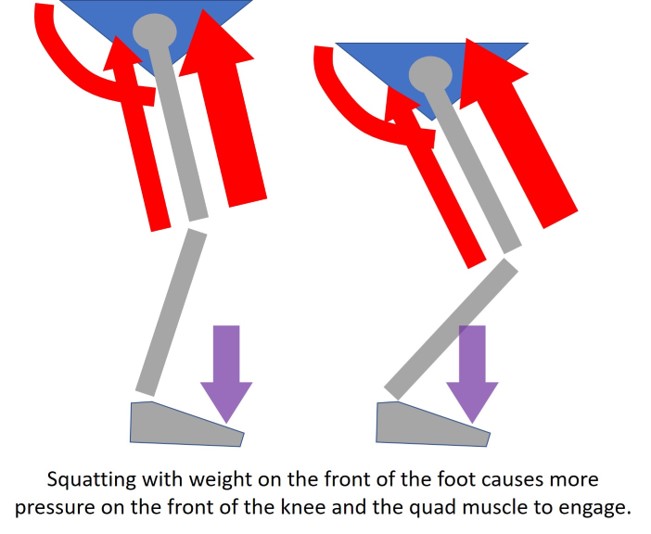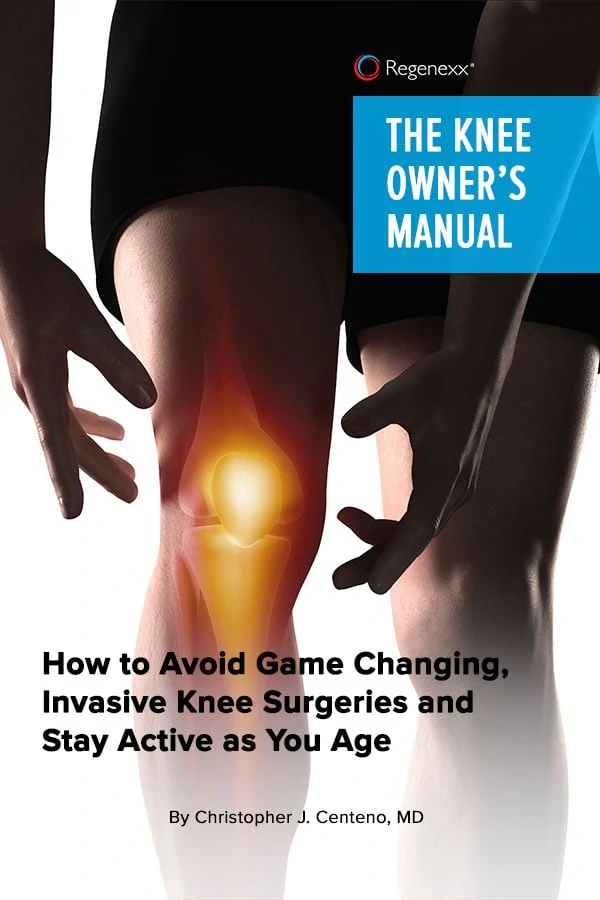Kneecap pain can be a symptom of a variety of issues (see infographic below—click to enlarge), and one of those is pressure in the quadriceps muscle. Kneecap arthritis can also be caused by many different issues, and one of those is excess pressure on both the quadriceps muscle and the kneecap. One way to reduce the pressure on and protect the kneecap is to learn the right way to squat. We’ll talk more about this in a moment, but, first, let’s examine how pressure on the front thigh muscle can damage the kneecap and lead to arthritis.
How Pressure on the Quadriceps Can Lead to Kneecap Arthritis
The quadriceps muscle, the main extensor of the knee, is actually a large muscle group that lives in the thigh. The kneecap (medical terminology: patella) is positioned at the front of the knee in the quadriceps muscle’s tendon, with the quadriceps tendon attaching at the top of the kneecap and the patellar tendon attaching at the bottom. So excess pressure on the quadriceps muscle can stress the tendon, which can damage the patella and the cartilage underneath. Over time the cartilage can wear down, leading to kneecap arthritis, a very common condition.
So how do you protect your kneecap? Learning the right way to squat is a great start.
Simple Exercises to Test Your Squatting Technique
If you spend time in most any exercise class, one of the first things you learn is to squat with your weight on your heels, yet people still squat incorrectly all the time. Let’s start with a couple of simple exercises to demonstrate why your squatting technique is so important.
Quadriceps Engaged: Wrong Squat
From a standing position, feet hip-distance apart, lift your heels slightly, placing more pressure on the ball (front) of your feet than on the back. Now lower into about a 45-degree squat. You should feel your quadriceps (the front thigh muscles) engage quite a bit (image below). Compare the feeling in the quadriceps to the hamstrings (back of the thigh) and butt muscles.
Hamstrings and Butt Engaged: Right Squat
Now back at your standing position, slightly pull up on your toes, and move your weight back onto your heels. Lower into another 45-degree squat, paying attention to which muscles engage. What do you feel? You should feel it more in your hamstrings and butt this time, and your quadriceps should be less engaged (image below).
So what do these exercises demonstrate? If you perform your squats on the balls of your feet, relying primarily on your quad muscles, you’re putting too much pressure on the quads and therefore the kneecap as well, causing kneecap pain and arthritis over time. Performing squats on the heels allows you to rely on the hamstrings and butt muscles, taking pressure off the kneecap.
A Bad Back Can Cause Quad-Dominant Squats and Kneecap Pain
One thing that can cause you to perform quad-dominant squats is a bad back. Irritated nerves in the low back can disrupt nerve supply to the hamstrings and butt muscles. When these muscles aren’t functioning properly this weakens these muscles and decreases their efficiency, and the quadriceps muscles will take over. You may not even realize you have a problem in your lower back, but if you are performing squats with your quadriceps primarily engaged because your hamstrings and butt muscles can’t properly engage, you may need to have your lower back examined by your interventional orthopedic physician.
In addition to squats, if you are a cyclist, the type of pedals you use can either cater to or wreak havoc on your kneecap biomechanics, so read more about this here if you are a cyclist.
It’s important to protect your kneecap cartilage so you aren’t setting yourself up for kneecap arthritis in the future. One way to do this is to learn the right way to squat and have your back checked if you are performing quad-dominant squats. If you want to learn more about kneecap pain and other issues that cause it as well as ways you can treat it, follow this link. In the meantime, when squatting, focus on working out the butt and hamstrings, not the kneecap.




